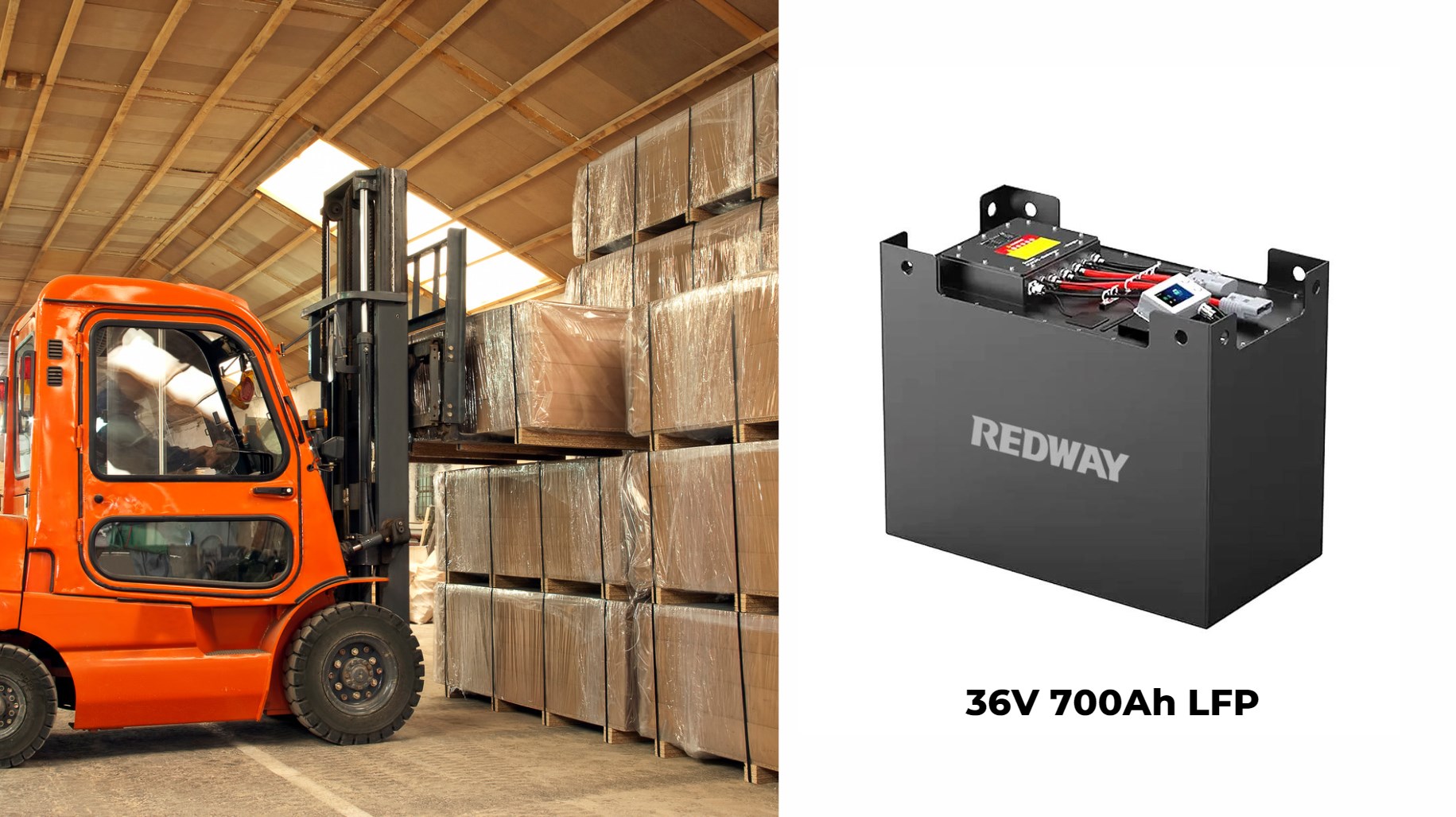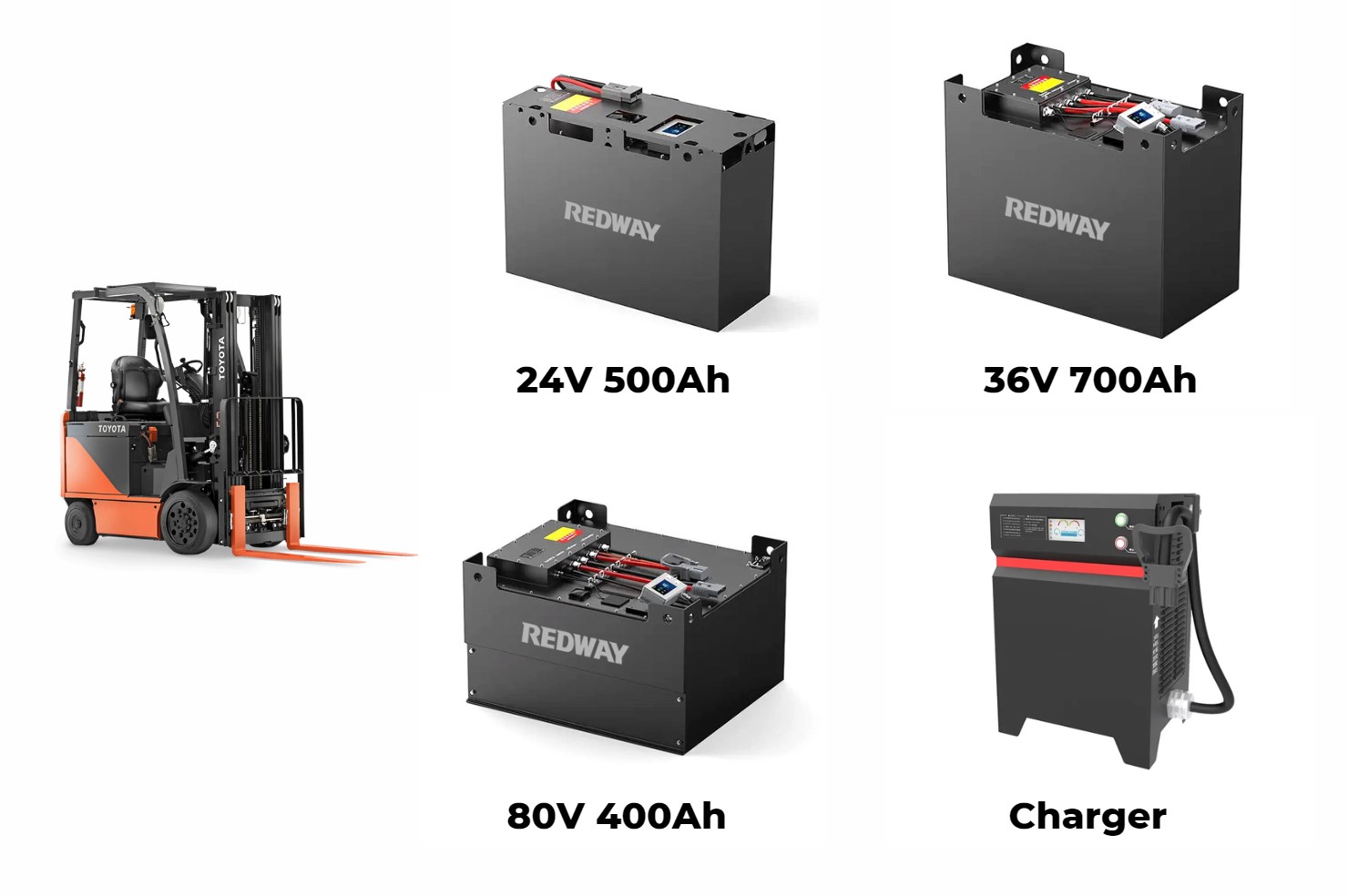36-volt forklift batteries are essential for powering electric forklifts and other material handling equipment. They provide the necessary power to perform a range of tasks, including lifting, transporting, and stacking loads efficiently. This article delves into the key aspects of 36V forklift batteries, including types, features, advantages, lifespan, and applications.
36V forklift batteries provide higher power output suitable for heavy-duty applications. They are often used in larger forklifts requiring extended run times. Understanding charging requirements is crucial for maximizing performance.
Types of 36V Forklift Batteries
Wholesale lithium golf cart batteries with 10-year life? Check here.
Understanding the different types of 36V forklift batteries is crucial for selecting the right battery for your needs. The two main types are lead-acid and lithium-ion.
Lead-Acid Batteries
Want OEM lithium forklift batteries at wholesale prices? Check here.
- Flooded Lead-Acid Batteries:
- Cost-Effective: These batteries are typically less expensive upfront compared to lithium-ion batteries.
- Maintenance Requirements: They require regular maintenance, including watering and equalization charging to ensure optimal performance.
- Usage: Commonly used in various industrial settings due to their affordability and reliability.
- AGM (Absorbent Glass Mat) Batteries:
- Improved Reliability: AGM batteries offer better performance and reliability than flooded lead-acid batteries.
- Lower Maintenance: They are maintenance-free in terms of watering and are less prone to acid leakage.
- Advantages: Better vibration resistance and durability make them suitable for more demanding applications.
- Gel Batteries:
- Enhanced Vibration Resistance: Gel batteries are similar to AGM but offer superior resistance to vibrations.
- Sealed Design: They have a sealed design that prevents spillage, making them safer for various environments.
Lithium-Ion Batteries
- Higher Initial Cost: Lithium-ion batteries generally have a higher initial purchase price compared to lead-acid options.
- Longer Lifecycle: They offer extended lifecycles, often exceeding 2,000 to 3,000 charge cycles.
- Fast Charging: Lithium-ion batteries can be charged quickly, reducing downtime and improving efficiency.
- Low Maintenance: These batteries require minimal maintenance with no need for watering or equalization, simplifying battery care.
Key Features and Advantages
1. Power and Performance
- Reliable Power Delivery: 36V batteries provide consistent and reliable power essential for efficient forklift operation.
- Performance: They are designed to handle demanding tasks, ensuring smooth operation even under heavy loads.
2. Long Operating Time
- Extended Usage: Lithium-ion 36V batteries can operate for longer periods between charges, enhancing productivity and reducing operational interruptions.
- Efficiency: The extended operational time contributes to fewer charging cycles and improved overall efficiency.
3. Faster Charging
- Quick Turnaround: These batteries typically charge faster than their higher voltage counterparts, enabling quicker turnaround and reducing wait times between shifts.
4. Cost-Effectiveness
- Initial Costs: While lithium-ion batteries have a higher initial cost, they offer lower long-term costs due to their longevity and reduced maintenance needs.
- Charging Systems: The charging systems for 36V batteries are generally less expensive compared to higher voltage systems, contributing to overall cost savings.
5. Maintenance
- Minimal Upkeep: Lithium-ion batteries require minimal maintenance compared to lead-acid batteries, which need regular watering and equalization charging.
- Operational Efficiency: The low maintenance requirements translate to reduced labor costs and operational downtime.
6. Safety
- Balanced Power and Safety: 36V batteries provide a good balance between power output and safety, reducing the risk of electrical hazards compared to higher voltage systems.
- Design Considerations: Modern 36V batteries are designed with safety features to minimize risks and ensure reliable operation.
Lifespan and Maintenance
The lifespan of a 36V forklift battery depends on usage patterns and maintenance practices. On average:
- Lithium-Ion Batteries: These batteries can last between 1,500 and 2,500 charging cycles. Proper charging practices, avoiding deep discharges, and maintaining optimal environmental conditions are crucial for extending battery life.
- Lead-Acid Batteries: Typically, they have a shorter lifespan, requiring more frequent replacements and maintenance compared to lithium-ion batteries.
Applications
36V forklift batteries are versatile and widely used across various industries, including:
- Warehousing: Essential for powering electric forklifts that handle inventory management and storage tasks.
- Manufacturing: Used in production environments where material handling efficiency is crucial.
- Logistics: Ideal for transportation and distribution centers that require reliable power for forklifts and other equipment.
The emission-free operation of 36V batteries makes them particularly suitable for indoor environments with strict emission regulations, contributing to a cleaner and safer workplace.
Conclusion
The 36V forklift battery is a vital component for efficient and reliable material handling in various industrial applications. With options available in lead-acid and lithium-ion technologies, each type offers unique advantages tailored to specific operational needs. By understanding the features, benefits, and applications of 36V batteries, businesses can make informed decisions to enhance productivity and operational efficiency.
FAQs
Forklift Battery Pack: A Comprehensive Guide
Recondition Forklift Battery: A Comprehensive Guide
Reconditioned Forklift Battery: An Economical and Eco-Friendly Solution
Used Forklift Battery: A Comprehensive Guide
Lithium Forklift Batteries: The Future of Material Handling
The Future of Electric Forklift Batteries: Innovations and Trends
Understanding 24V Forklift Batteries: A Comprehensive Guide
36 Volt Forklift Battery: A Comprehensive Overview
Understanding 12V Forklift Batteries: A Comprehensive Guide
A Comprehensive Guide to Forklift Batteries: Types, Advantages, and Considerations
Understanding the Types of Forklift Batteries: A Comprehensive Guide







